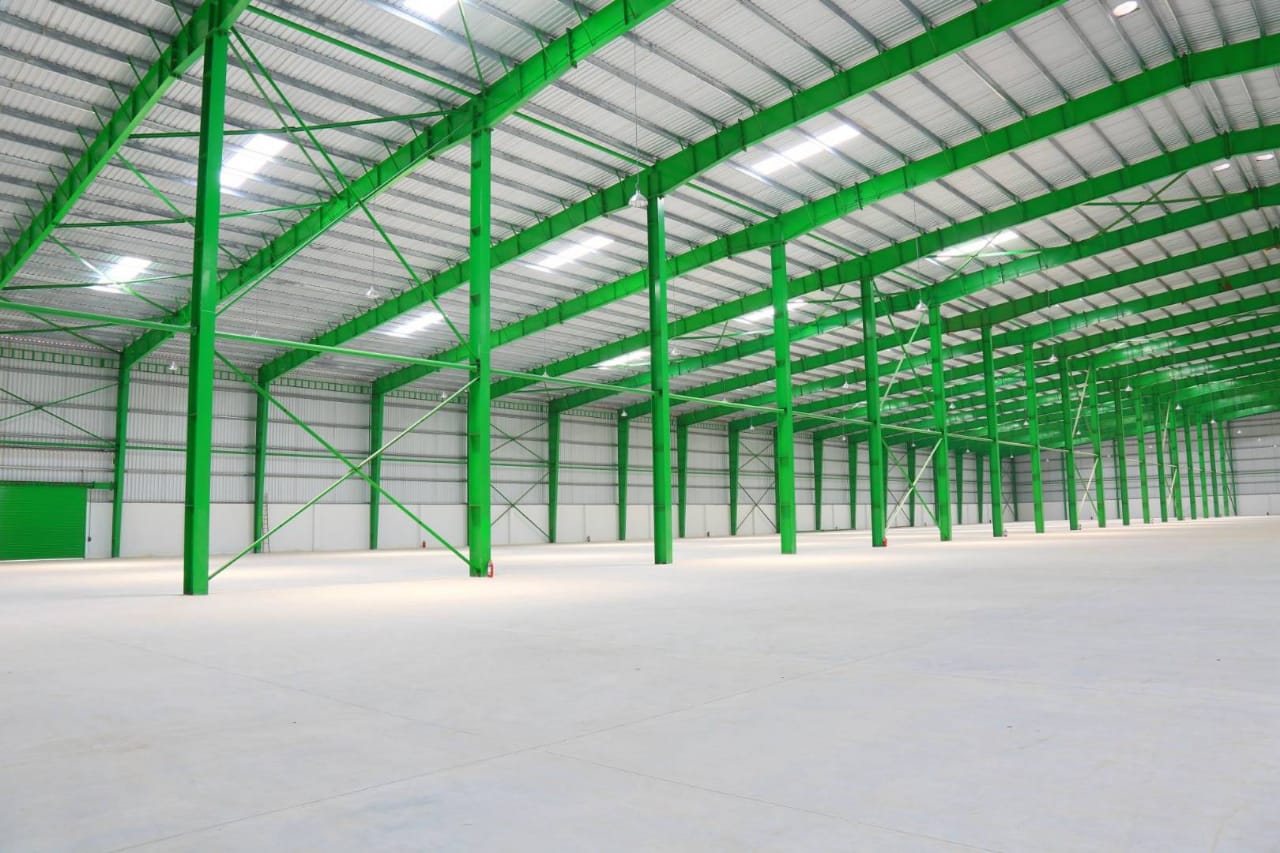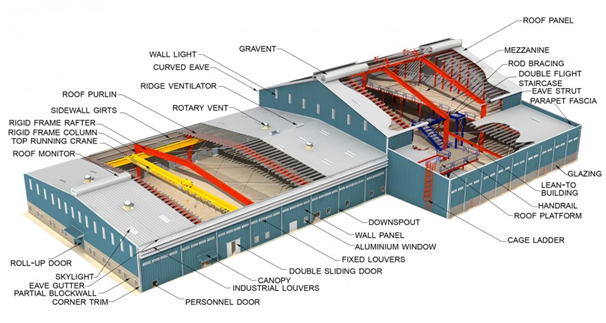LARGE-SPAN BUILDINGS:
Large-span space steel structure are mainly used in public buildings, such as city halls, theaters, exhibition halls, concert halls, gymnasiums, stadiums and airports. Large-span structures are also used in industrial buildings, such as general assembly workshops of aircraft manufacturing plants, hangars, hull structure workshops of shipyards, etc. The use of large-span structures in these buildings is determined by the large size or process requirements of the assembled machines.


PEB VS CONVENTIONAL BUILDINGS
| PEB | Conventional Buildings | |
| Structure weight |
30% lighter through optimum use of steel, Primary framing members are varying depth sections with larger depths in areas of high stress Secondary members are light gauge (light weight) roll formed 'Z' or 'C' shaped members |
Primary members selected from standard sections, which can be heavier than required, Members have constant cross-sections regardless of local stresses along member length Secondary members are selected from standard hot rolled 'I' or 'C' sections, which are heavier |
| Design |
Quick and efficient, since basic designs can be reused and built upon. Specialized computer analysis and design programs optimize material required. Computerized drafting using standard details minimizes custom details. PEB engineers design & detail almost every day throughout the year resulting in faster & more efficient designs. |
Each structure designed from scratch. Substantial engineering & detailing required on every project. Generalized computer analysis is require extensive input/output & design alterations. Each project is a separate case, engineers need more time to develop the design & details of the unique structure. |
| Delivery | 6 to 8 weeks on average | 20 to 26 weeks on average |
| Foundations | Simple design, easy to construct | Extensive, heavy foundations required |
| Erection cost and Time |
Both costs & erection time are accurately known. Erected by specialized PEB builders with extensive experience in erection of similar buildings. A stock of standard components enables on-time job completion should any shortage or on-site damage occur to materials. Erection process is easy, fast, step-by-step and with minimum equipment requirement |
In most cases, erection costs and time are not estimated accurately. Erection is slow and extensive since more field labour and heavy equipment are often required |
| Seismic Resistance | Low-weight, flexible frames offer higher resistance to seismic forces | Heavy, rigid structures do not perform well in high-risk seismic zones |
| Overall Price | Price per square meter may be up to 30% lower than conventional buildings | They have a higher price per square meter than PEB |
| Architectural Design | Outstanding architectural design can be achieved at low cost using standard architectural features and interface details. | Special architectural design and features must be developed for each project, which often require research and thus resulting in much higher costs. |
| Sourcing & Coordination | Building is supplied complete with cladding and all accessories including erection (if desired) from one single source. | Many sources of supply, project management time is required to coordinate suppliers and sub-contractors. |
| Responsibility | Single source of supply results in total responsibility by one supplier, including design liability. PEB manufacturers can be relied upon to service their buildings long after they are supplied to protect their reputation. | Multiple responsibilities can result in questions of who is responsible when components do not fit properly, insufficient material is supplied, or materials fail to perform, particularly at the supplier/contractor interface. The consultant carries total design liability. |
| Performance |
All components are designed specifically to act together as a system, for maximum efficiency, precise fit, and peak performance in the field. Experience with similar buildings, in actual field conditions, has resulted in design improvements overtime, which allow dependable prediction of performance. |
Components are custom designed for a specific application on a specific job. Design and detailing errors possible when assembling the diverse components into unique buildings. Each building design is unique, so prediction of how components will perform together is uncertain. Materials which have performed well in some climates may not do so in other environments. |

